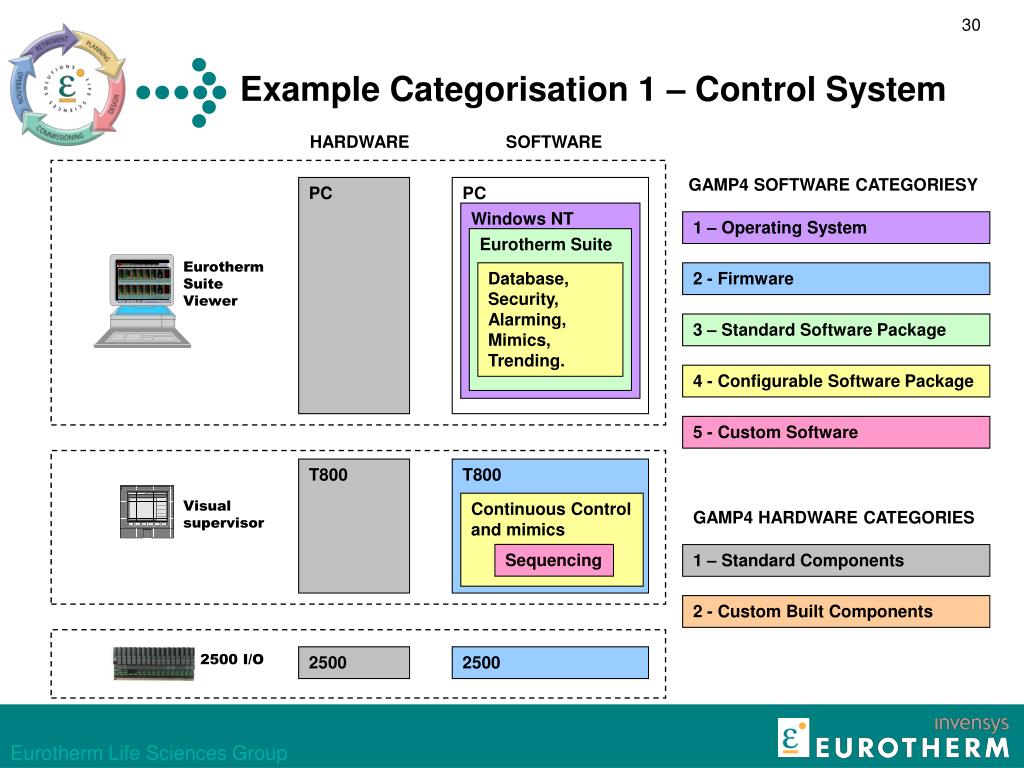
- Gamp 4 software categories verification#
- Gamp 4 software categories code#
- Gamp 4 software categories series#
A project sequence by use case is due to the fact that LIMS systems have a specific nature of complexity. An increment or sprint should be a use case or a defined set of use cases.

The software project for laboratory automation should be clearly structured by use cases. The user should focus on the process: is the software able to support the process and is there any risk that automation adds to the process? A mere retesting of the vendor’s software in the environment of the user is not constructive.

Gamp 4 software categories code#
Such an audit should include for example software/hardware design practices, product design records, program coding standards, system test records, programming tools, code review practices, version control, software replication, problem reporting/resolution and fault notification to customers. Supplier activities should be levered to the maximum possible extent and a supplier audit should be performed. In a regulated environment, there may be some additional effort for documentation. These two steps of quality assurance have to take place in any case. This is functional testing by the development team during the sprint and requirement testing by the product owner and key users at the end of each sprint.
Gamp 4 software categories verification#
Software verification according to GAMP-5 should be integrated in processes that have to be done anyhow with each increment (sprint) during software implementation. Incremental approaches are particularly valuable for packaged software (they already have a starting point) and for situations where final users experience difficulties expressing user requirements beforehand and in an abstract way.Ĭompanies should look for ways to reduce software verification effort according to GAMP 5 recommendations. During a sprint, design, development and testing people work closely together and produce a running increment of software that has already been tested.
Gamp 4 software categories series#
The idea is that in a series of consecutive “sprints”, a working and potentially releasable increment of product (software) is completed every 2 - 4 weeks. Latest approaches for software projects (like Rapid Prototyping or agile methods like Scrum) provide shorter cycle times and a more immediate look and feel of the software for the final user. The modelling of user requirements without seeing a running piece of software is abstract and usually requirements for modification arise when the final user deals with the running software for the first time. Vendors of software for regulated pharma environments maintain a state of the art quality assurance system and they have to prove that their core system is encoded and tested comprehensively.įigure 1: V-model or waterfall model There are two disadvantages of the traditional V-model: There are long cycle times from user requirement specification to user acceptance test and requirements may change in the meantime. It is questionable whether such an effort is constructive for configurable software packages (GAMP 5 category 4).

As often seen in practice, OQ may take up to 50 % of the total effort outsourced for a project. LIMS vendors provide their users with scripts based on which the technical functionality of the software in the clients’ (users’) environment (database, security, operating system, hardware platform, etc.) is tested. To help out their clients, LIMS vendors offer validation support mainly for “OQ” (OQ means “Operational Qualification”) for their clients (hereinafter called “users”). Verification is seen as a heavy burden in the implementation of Laboratory Information and Management Systems (LIMS). Formal software verification (often called validation) is a necessity in regulated pharma environments, as for example described and recommended in the GAMP 5 standard.


 0 kommentar(er)
0 kommentar(er)
